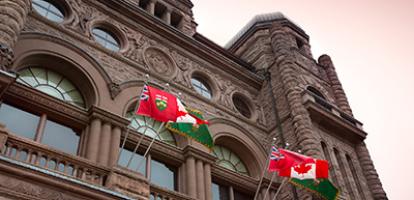"The WTO’s panel decisions and appeal decisions have been very successful at ferreting out such disguised trade restrictions, making it clear that even if a measure meets the test of necessity it is still not considered acceptable if there are less trade-restrictive alternatives that could be employed."
Now that some time has passed since the surprising Supreme Court of Canada decision in the Comeau case, it’s worth reflecting on some of the concepts enunciated in that judgment in upholding New Brunswick’s ban on cross-border beer imports.
The central issue in that case, of course, was whether Section 121 of the Constitution was breached by the New Brunswick law under which Mr. Comeau was charged. Section 121 says: “All Articles of the Growth, Produce, or Manufacture of any one of the Provinces shall . . . be admitted free into each of the other Provinces.”
Note that the words are “shall . . be admitted free.” Section 121 doesn’t say “duty free” but “free” — full stop. That word would in a normal sense seem to mean admitted into the province without restriction or hindrance and that any provincial law imposing a total ban on the flow of goods into the province would be unconstitutional.
Not so, said the court. Even though Section 121 talks about goods being admitted “free,” the court said that doesn’t really mean free of all restrictions. Only if the “primary purpose” of the measure restricts trade does it run afoul of the Constitution. As stated by the court: “ . . . a party alleging that a law violates s. 121 must establish that the law in essence and purpose restricts trade across a provincial border.”
Establishing that a provincial law “in essence and purpose” restricts trade is a very high bar indeed. Many laws, regulations and measures have a variety of objectives, only one of which could be to restrict trade. A provincial law ostensibly aimed at other factors, when its genesis is examined, could include a disguised trade barrier even if that is not its “essence and purpose.” Under the Supreme Court’s dictum, that law would still pass muster.
Of course, the court is charged with interpreting Canadian law and doesn’t have to look at larger international treaties or jurisprudence under Canada’s trade agreements. But it would have been highly instructive for the court to have considered the array of decisions of the World Trade Organization and its predecessor, the General agreement on Tariffs and Trade (GATT), two bodies that have had over 60 years of experience dealing with border issues and trade barriers. Had it done so, it may well have used different language and come to a more balanced decision.
The WTO and GATT agreements aimed at opening up markets and dealing away direct and disguised trade restrictions. These differ in obvious respects from Canada’s Constitution and so we can’t ascribe total comparability between the two. However there are aspects of the WTO agreement that inform aspects of Canada’s Constitution, particularly the free-trade aspects of Section 121, and these weren’t even considered by the court.
The WTO agreement obliges signatory states to maintain open markets, subject to only very limited exceptions. Canada’s Constitution is not so direct, except if one considers the use of the word “free” under Section 121, which implies the objective of open markets from coast to coast. In that sense, Canada’s Constitution shares common attributes with the GATT and WTO agreements in that, while creating Canada as a confederation, the Constitution was — and is — based on the principle of a single political and economic union where, one would expect, goods are allowed to enter markets freely from one end to the other.
Under the WTO agreement and the GATT, countries can only deviate from free-trade obligations where a restrictive measure is demonstrably “necessary” to protect life, health or the environment and, importantly, isn’t either arbitrary or discriminatory or a “disguised restriction on international trade.”
The WTO’s panel decisions and appeal decisions have been very successful at ferreting out such disguised trade restrictions, making it clear that even if a measure meets the test of necessity it is still not considered acceptable if there are less trade-restrictive alternatives that could be employed.
In the WTO’s famous “Asbestos Case,” where Canada challenged the EU’s restrictions on asbestos imports, the WTO panel and the Appellate Body (to which Canada had appealed) looked carefully at the measure and its human health underpinnings balanced against the rules of free trade and concluded that there were no reasonable alternatives available to the European Union other than preventing asbestos imports.
Had the Supreme Court looked into some of this WTO-GATT jurisprudence, it might well have modified its “primary purpose” test, placing a burden on the province to justify interfering with the flow of goods within Canada’s economic union on the basis of “necessity” and lack of available alternative measures.
In other words, instead of concluding that under Section 121 the burden is on the complaining party to prove that the “essence and purpose” of a provincial measure is to restrict trade, the court might have concluded — as in the WTO-GATT — that the burden is on the province to show that the measure is necessary, that it isn’t a disguised protectionist device, and that no reasonable alternatives exist other than prohibiting imports. It seems that the Supreme Court got this backwards.
Lawrence L. Herman practices international trade law at Herman & Associates and is a Senior Fellow of the C.D. Howe Institute in Toronto.
Published in the Financial Post





